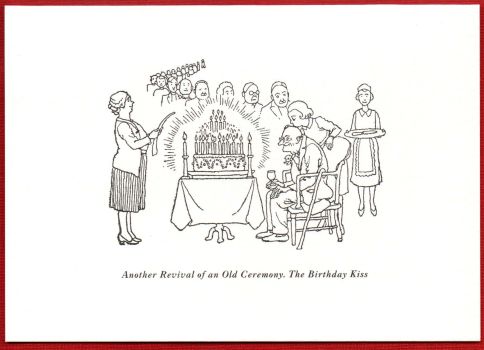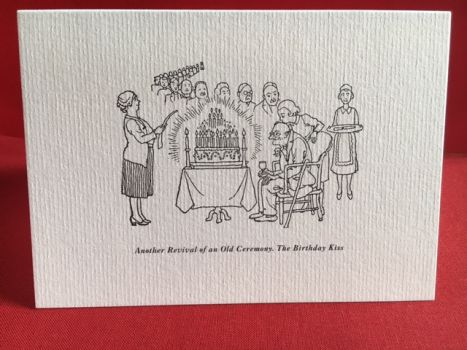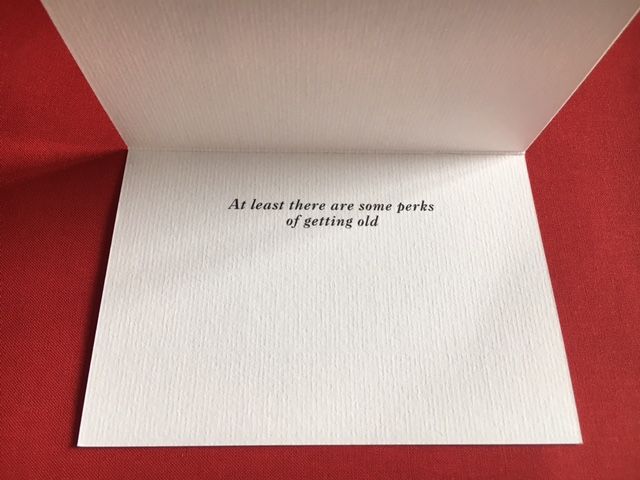-
“In the history of British illustration, William Heath Robinson is a kind of Tudor monarch, a figure who stands out for being well-known, uncommonly gifted and fantastically English.”
Heath Robinson Birthday Card
Another Revival of an Old Ceremony. The Birthday Kiss
£2.50
If you have to celebrate the passage of another year, take a leaf out of Heath Robinson’s book How to Run a Communal Home and throw a very well-attended party.
12 in stock
Dispatched next day with Royal Mail 2nd Class
- RRP: £2.50 (incl. VAT)
- Format: 105 mm x 148 mm (A6) landscape, folded
- Paper: FSC 300 gsm ivory laid cartridge
- Envelope: White
- Weight: 9 g
- ISBN: 978 1 8733 2962 7
- Publication: August 2017
How to Run a Communal Home was the third collaboration between Heath Robinson and the writer Cecil Hunt. It appeared in 1943, the year after the Beveridge Report laid the foundations of the Welfare State. Gently satirizing communitarian ideals, Heath Robinson played up the advantages of communal living, including the multiple birthday kiss.
Front Page Text: Another Revival of an Old Ceremony. The Birthday Kiss
Message Inside: At least there are some perks of getting old
William Heath Robinson (1872-1944) is one of the few artists whose names have become part of the English language. According to the Oxford English Dictionary, the expression is used to describe ‘any absurdly ingenious and impractical device’. Heath Robinson started out as a landscape artist and book illustrator before finding world-wide fame with his mechanical fantasies. He invented machines for making coffee, lighting cigars, extinguishing candles, peeling potatoes, testing raincoats, saving chickens from injury when crossing the road and conducting just about every other conceivable, and sometimes inconceivable, activity. He satirized the new ways of living that came with technological change, small flats and shortages, creating a whimsical social commentary on his times: history encapsulated in pictures.










